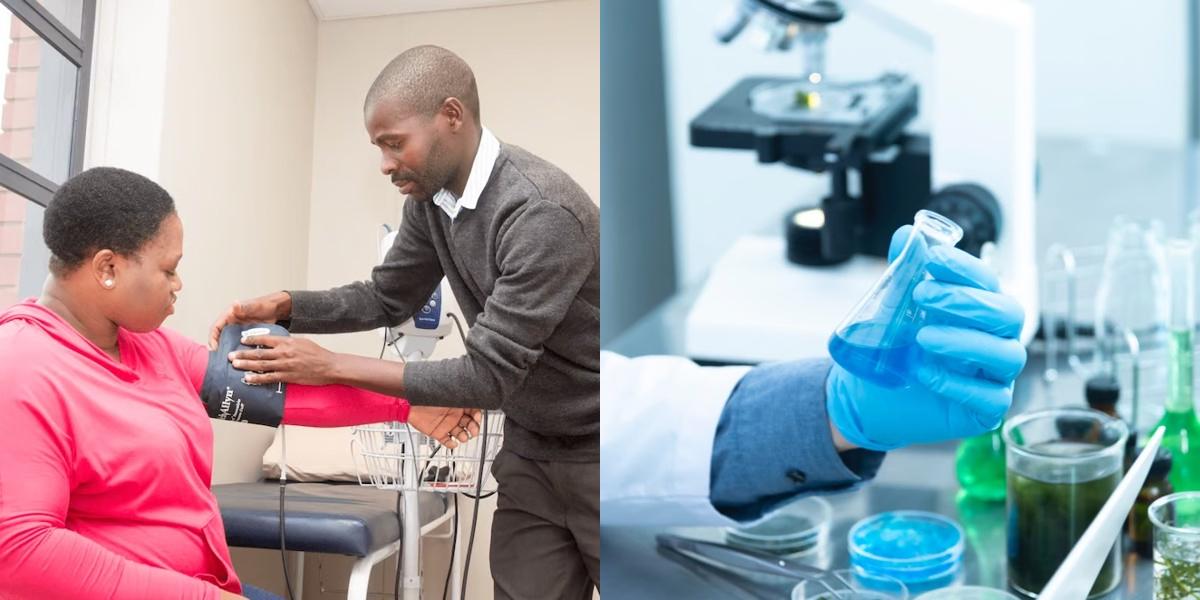Medical Assistant vs Sterile Processing Technician (2025)

When it comes to choosing a career in the healthcare industry, there are a variety of options to consider. Two popular choices are becoming a Medical Assistant or a Sterile Processing Technician. Both of these professions play critical, yet distinct, roles in the healthcare field. In this blog post, we will explore the differences between a Medical Assistant and a Sterile Processing Technician, including their job descriptions, education and training requirements, and career outlooks.
Medical Assistant
- According to the Bureau of Labor Statistics (BLS), the median annual wage for medical assistants was $35,850 as of May 2020. The top 10% earned more than $50,580, while the bottom 10% earned less than $26,930.
- The BLS projects that employment of medical assistants will grow 19% from 2019 to 2029, which is much faster than the average for all occupations. This growth is due to the increasing demand for healthcare services and the need to support healthcare professionals.
Sterile Processing Technician
- The BLS does not provide specific salary data for sterile processing technicians. However, they do report that the median annual wage for medical equipment preparers, which includes sterile processing technicians, was $40,890 as of May 2020. The top 10% earned more than $61,850, while the bottom 10% earned less than $29,680.
- The BLS projects that employment of medical equipment preparers will grow 7% from 2019 to 2029, which is faster than the average for all occupations. This growth is also driven by the increasing demand for healthcare services.
Medical Assistant vs Sterile Processing Technician: Which is Better for You?
Choosing between a career as a Medical Assistant (MA) or a Sterile Processing Technician (SPT) ultimately depends on your personality type, work style preferences, and career goals. Both are essential healthcare roles, but the day-to-day experience is vastly different.
Choose Medical Assistant if:
- You are a "people person": You thrive on social interaction and want to provide direct emotional and physical support to patients.
- You enjoy variety: You like a job that changes from hour to hour, switching between clinical tasks like taking vitals and administrative duties like answering phones.
- You prefer standard hours: You are looking for a predictable schedule, such as Monday through Friday, 9-to-5, which is common in the clinics and private practices where most MAs work.
Choose Sterile Processing Technician if:
- You are detail-oriented: You have a keen eye for precision and enjoy following strict protocols where accuracy is critical for patient safety.
- You prefer working behind the scenes: You want to make a vital impact on patient health but prefer to avoid the social demands and unpredictability of direct patient care.
- You don't mind a physically active environment: You are comfortable standing for long periods, wearing full Personal Protective Equipment (PPE), and working in a structured, often windowless environment like a hospital's central service department.
Frequently Asked Questions
Is sterile processing harder than being a medical assistant?
Neither job is strictly "harder," but they challenge you in different ways. Sterile processing can be physically demanding and mentally fatiguing due to the need for hyper-focus on technical details and repetitive processes. Medical assisting is challenging because it requires high emotional intelligence, multitasking, and the ability to manage difficult patient interactions.
Can a medical assistant become a sterile processing tech?
Yes, but it is not an automatic transition. While an MA has valuable healthcare knowledge, the technical skills required for instrument sterilization are very specific. An MA would typically need to complete a dedicated sterile processing training program and pass a certification exam (like the CRCST) to make the switch.
Which pays more, Medical Assistant or Sterile Processing Technician?
Salaries are generally comparable, but Sterile Processing Technicians often start at a slightly higher hourly wage, particularly because they are more likely to work in hospitals rather than smaller private clinics. However, salary can vary significantly by state, certification level, and shift differential (e.g., SPTs may earn more for working nights or weekends).
Do sterile processing techs work with patients?
No. Sterile Processing Technicians rarely, if ever, interact with patients. Their work is confined to the "dirty" (decontamination) and "clean" (assembly/sterilization) sides of the department, dealing strictly with equipment and surgical teams.
Is there a lot of blood in sterile processing?
Yes. In the decontamination area, technicians handle used surgical instruments that are often covered in blood, bone, and bodily fluids. You will be fully protected by PPE, but you must be comfortable cleaning biological matter to perform this job successfully.
Final Thoughts
When considering a career as a medical assistant or a sterile processing technician, it's important to think about your interests and strengths. If you enjoy working directly with patients and performing a variety of tasks, becoming a medical assistant may be the right choice for you. On the other hand, if you have good attention to detail and enjoy working behind the scenes to ensure the safety of medical procedures, a career as a sterile processing technician may be a better fit.
Both medical assistants and sterile processing technicians play critical roles in the healthcare industry, and there is a demand for professionals in both fields. With the right education and training, you can embark on a rewarding career that allows you to make a difference in the lives of others.
Dreambound has strategically placed its educational programs in various locations, making it easy for aspiring individuals to access valuable opportunities. For a thorough insight into the dynamic realms of these two vocations, we encourage you to delve into more detailed information by visiting:

Vduani Martinez is a part of the Growth team at Dreambound. She creates and fixes workflows and automation to guarantee seamless operations. On top of that, she manages databases to ensure all information is up to date. Vduani is a licensed Electronics Engineer who loves coffee and is a travel enthusiast. Out of the office, she enjoys going on road trips and discovering new cafes and restaurants.




